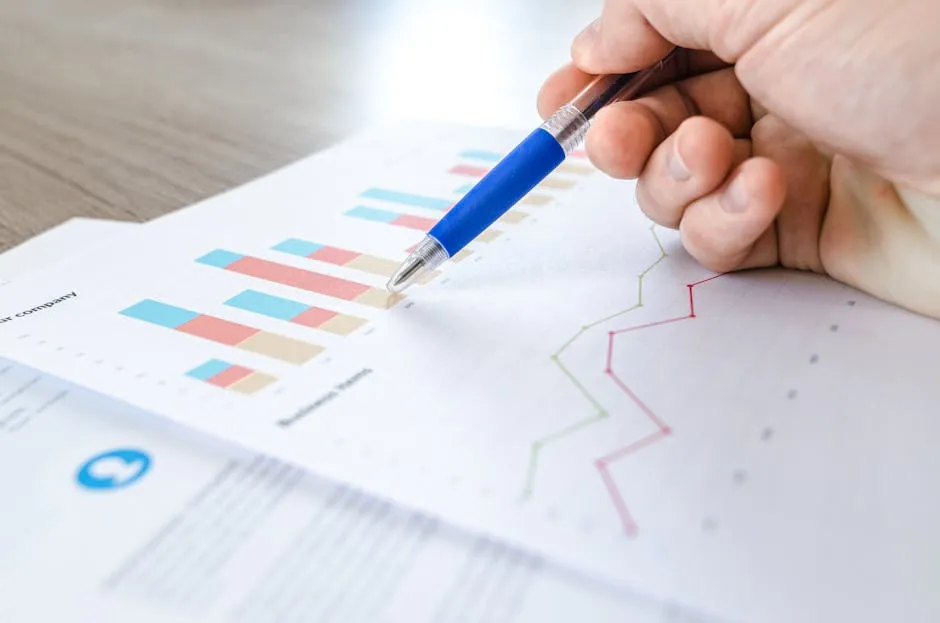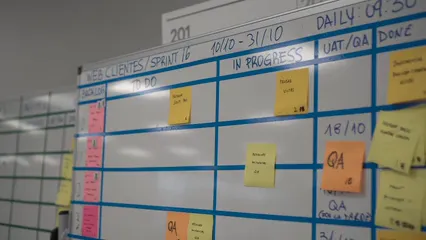Introduction
Statistical tracking is the art of capturing, analyzing, and interpreting data. It involves the systematic collection of information to understand trends, patterns, and behaviors. Think of it as your personal detective, sifting through numbers to unveil the hidden stories they tell. In today’s data-driven world, statistical tracking has grown increasingly significant across various fields, including business, sports, and health.
In business, companies rely on statistical tracking to make informed decisions. It helps them understand customer behavior and optimize marketing strategies. In sports, coaches use it to evaluate player performance, making adjustments to enhance team success. Health professionals track patient data to improve treatment plans and outcomes.
With the rise of technology, the methods of statistical tracking have evolved. We now have access to sophisticated tools that automate data collection and analysis, making it easier than ever to extract valuable insights. Throughout this article, we’ll examine the practical applications and best practices of statistical tracking. We’ll arm you with knowledge on how to effectively harness data to boost decision-making in your field.

Understanding Statistical Tracking
What is Statistical Tracking?
Statistical tracking refers to the collection and analysis of quantitative data to identify trends and inform decisions. It plays a crucial role in decision-making processes. For instance, businesses track sales data to determine which products are hot sellers. Sports teams analyze player statistics to identify strengths and weaknesses. In health, tracking patient outcomes helps shape effective treatments.
Historical Context
The history of statistical tracking dates back centuries. Early methods were manual and labor-intensive, relying on tedious calculations and record-keeping. Over time, the field evolved, embracing technology. Automated systems now collect and analyze data much faster than humans ever could. This shift not only increased efficiency but also improved the accuracy of data analysis.
Key Concepts in Statistical Tracking
A solid understanding of basic statistical concepts is essential for effective tracking. Here are some key terms:
- Mean: The average of a data set.
- Median: The middle value when data is sorted.
- Mode: The most frequently occurring value.
- Standard Deviation: A measure of data dispersion around the mean.
Data integrity and accuracy are paramount in statistical tracking. If your data is flawed, your insights will be too. Regular audits and checks will help ensure the quality of your data, leading to better decision-making down the line.
With these foundational principles in mind, you’re well on your way to mastering the art of statistical tracking!

Types of Statistical Tracking
Web Analytics
Definition and Importance: Web analytics is all about tracking user behavior on websites. It helps understand how visitors interact with your site. Imagine having a friendly ghost that whispers insights about every click, scroll, and bounce! This data is crucial for improving user experience and boosting conversion rates.
Tools and Techniques: There are several tools that make web analytics a breeze. Google Analytics is the heavyweight champ, offering insights into traffic sources, user demographics, and behavior flow. Statcounter is another popular choice, providing real-time visitor data. These tools help you visualize user journeys and identify what works and what doesn’t.
Use Cases: Web analytics can illuminate traffic sources, revealing where users come from. Is it social media, search engines, or good old-fashioned referrals? You can also track user engagement metrics, like time spent on pages and bounce rates. These insights are gold for marketers looking to optimize their strategies. For instance, if users drop off at a specific page, it might be time to spruce it up!

Performance Metrics in Sports
Tracking Athlete Performance: Statistical tracking plays a pivotal role in the sports world. Coaches and trainers analyze performance metrics like running times and scores to assess athletes over time. It’s like having a performance diary that tells you when to push harder or ease off. This data-driven approach helps athletes fine-tune their training regimens and maximize potential.
Data Visualization: Visual representation of performance data is crucial. Think of colorful graphs and charts that show progress over time. They help coaches and athletes see trends and make informed decisions. For example, a line graph showcasing an athlete’s sprint times can highlight improvements or plateaus, guiding adjustments in training strategies. The clearer the data, the sharper the insights!

Health and Fitness Tracking
Wearable Technology: The rise of fitness trackers and health apps has revolutionized personal health monitoring. Devices like Fitbit Charge 5 and Apple Watch Series 7 track steps, heart rates, and sleep patterns. They turn health tracking into a game, where every step counts! Users can set goals and receive real-time feedback, making fitness a fun, interactive experience.
Importance of Tracking Metrics: Tracking metrics such as heart rate, steps taken, and calories burned is vital for a healthy lifestyle. These metrics provide insights into daily activity levels, helping individuals stay accountable. Consistent tracking can lead to healthier habits and better overall well-being. Plus, who doesn’t love the satisfaction of hitting a step goal?

Business Metrics
Conversion Tracking: In the business realm, conversion tracking is essential. It measures how effectively marketing campaigns turn visitors into customers. Tools like Google Ads and Statcounter let businesses see exactly how many users clicked through and made purchases. This data helps refine marketing strategies, ensuring businesses focus on what truly converts.
Customer Behavior Analysis: Tracking customer interactions and preferences can reveal valuable insights. Businesses can analyze user behavior patterns, such as browsing history and purchase frequency. This information guides personalized marketing efforts. For example, if a customer frequently buys running shoes, targeted ads for new models may catch their eye. Understanding customer behavior is the key to building lasting relationships and driving sales.
By harnessing these statistical tracking methods, professionals across various fields can gain a deeper understanding of performance, health, and market dynamics. With the right tools and techniques, the sky’s the limit for insights!

Best Practices for Effective Statistical Tracking
Define Clear Objectives
Setting clear objectives is the beating heart of effective statistical tracking. Without specific goals, you’re essentially sailing a ship without a compass. What do you want to achieve? Increased sales? Improved user engagement? Perhaps reduced churn rates? Establishing SMART objectives—Specific, Measurable, Achievable, Relevant, and Time-bound—can guide your tracking efforts effectively.
For example, instead of saying, “I want to boost sales,” a SMART objective would be, “Increase online sales by 15% in the next quarter through targeted email campaigns.” This clarity helps you focus your efforts and measure success accurately. The clearer your objectives, the more precise your tracking can be.

Choose the Right Tools
With a plethora of tools available, selecting the right ones can feel like choosing a favorite child, but fear not! Popular options like Google Analytics, Statcounter, and Matomo each offer unique features tailored to different needs. If you’re serious about making sense of your data, you might want to consider investing in a comprehensive resource like The Data Warehouse Toolkit: The Definitive Guide to Dimensional Modeling. It’s like having a GPS for your data journey!
When picking tools, consider ease of use—if you can’t navigate it without a PhD, it’s probably not the right fit. Integration capabilities are crucial as well; ensure your chosen software can communicate with your existing systems. Lastly, keep an eye on cost. Free tools can be fantastic, but sometimes you get what you pay for. Assess the value of premium options based on your tracking needs.

Data Collection Methods
Data collection isn’t a one-size-fits-all endeavor. Different methods can yield distinct insights, so choose wisely based on your objectives. Surveys can capture user opinions directly, while automated tracking provides continuous, unbiased data. Observational methods, on the other hand, can give you a glimpse into real-time behavior.
The key lies in understanding what you need. If you’re measuring user satisfaction, surveys are your best friend. For tracking website interactions, automated tools shine. The right method ensures data relevance and accuracy, leading to actionable insights.

Maintaining Data Quality
Data quality is the unsung hero of statistical tracking. If your data is inaccurate, your insights will be as useful as a chocolate teapot. Implement best practices like regular audits to catch inconsistencies early. Establish protocols for data entry and validation to maintain accuracy.
Consistency is vital; ensure everyone on your team follows the same guidelines for data collection. Tools that automate data cleaning and validation can save you time and headaches. Remember, good data leads to smart decisions, so treat your data with the care it deserves!

Analyzing and Interpreting Data
Once you have collected your data, it’s time to analyze and interpret it. Employing statistical methods and software tools—like R for Data Science, Python for Data Analysis, or even Excel 2021 for Dummies—can help you uncover trends and insights hidden in your numbers.
Context is everything. Numbers without context can lead to misinterpretation. For instance, a spike in website traffic might look great, but if conversions are down, you might be attracting the wrong audience. Always ask “why” when analyzing data. Why did this trend occur? What external factors might have influenced it? This critical thinking will make your analysis more robust and informative.
In conclusion, effective statistical tracking is a blend of clear objectives, the right tools, appropriate data collection methods, quality maintenance, and insightful analysis. By following these best practices, you can transform raw data into actionable insights that drive success. Now go forth and make your tracking efforts count!

Case Studies: Successful Applications of Statistical Tracking
Business Case Study: E-commerce
Let’s take a closer look at the success of ShopSmart, an e-commerce giant that embraced statistical tracking to skyrocket its sales. They implemented a robust web analytics system, allowing them to gather data on user behaviors, conversion rates, and product performance.
By focusing on key metrics like cart abandonment rates and user engagement levels, ShopSmart identified a significant drop-off point during the checkout process. Armed with this insight, they revamped their checkout page, simplifying the steps and adding user-friendly features.
The results? A 35% increase in completed transactions and a 20% boost in overall sales within just three months. Their ability to track customer interactions and optimize the user experience resulted in happier shoppers and a thriving business. It’s a classic case of numbers transforming into profit!

Sports Case Study: Athletic Training
Now, let’s switch gears and talk about the Riverside Raptors, a professional basketball team that took player performance to a whole new level using statistical tracking. They employed a combination of wearable technology and video analysis to gather data on players’ movements, shooting accuracy, and fatigue levels.
By analyzing these metrics, the coaching staff pinpointed specific areas for improvement. For example, they discovered that star player Jake was taking too many shots from beyond the arc, leading to decreased shooting percentages. The team adjusted his training regimen to focus on mid-range shooting and stamina.
The outcome? The Raptors saw a 15% increase in Jake’s scoring average and a 10% improvement in team overall performance during the season. This story highlights how data-driven decisions can refine athletic training and enhance team dynamics.

Health Case Study: Fitness App
Meet FitTrack, a fitness app that has transformed the way users achieve their health goals. Utilizing statistical tracking, FitTrack helps users monitor their daily activities, calorie intake, and workout effectiveness.
One user, Sarah, was struggling to meet her fitness targets. After analyzing her data, FitTrack identified that she often skipped strength training. The app suggested a personalized workout plan that included reminders and motivational tips.
Within weeks, Sarah not only reached her fitness goals but also reported feeling more energized and confident. User feedback flooded in, with many sharing similar success stories. FitTrack’s ability to harness statistical tracking truly empowers users to take charge of their health journeys and achieve tangible results.

Challenges in Statistical Tracking
Common Pitfalls
Implementing statistical tracking isn’t a walk in the park. Many organizations stumble over common pitfalls. One major mistake is failing to define clear objectives before launching tracking initiatives. Without specific goals, it’s easy to get lost in a sea of data.
Another frequent blunder is neglecting staff training. If employees don’t understand how to use tracking tools effectively, they won’t capture accurate data. It’s like giving someone a fancy camera without teaching them how to take a good photo!
Awareness and ongoing training are crucial. Regular workshops can keep everyone on the same page, ensuring that data collection is consistent and meaningful.

Privacy Concerns
In today’s digital era, privacy concerns loom large in the tracking world. Organizations must navigate a minefield of regulations and ethical considerations. Tracking user data without consent can lead to serious repercussions.
To ensure ethical handling of data, organizations should prioritize transparency. Inform users about what data is tracked and how it will be used. Implementing robust data protection policies is a must.
Best practices include anonymizing data and allowing users to opt out of tracking. By placing privacy at the forefront, organizations can build trust with users while still benefiting from valuable insights. Balancing data collection with ethical considerations is the key to successful statistical tracking.
Data Overload
In today’s data-centric landscape, we face a familiar foe: data overload. Picture this: you’re drowning in a sea of numbers, graphs, and charts. Each data point is like a tiny lifebuoy, but instead of saving you, they add to the chaos. The implications? Misguided decisions, wasted resources, and plenty of headaches.
The key to overcoming data overload lies in prioritizing and focusing on key metrics. Start by identifying your most critical goals. Ask yourself, “What do I really need to know?” This approach helps you sift through the noise and concentrate on the data that drives real impact.
Consider adopting the SMART criteria—Specific, Measurable, Achievable, Relevant, and Time-bound. This method encourages clarity and ensures your tracking efforts align with your objectives. By narrowing your focus, you can transform overwhelming data into actionable insights, making the analysis process feel less like a daunting chore and more like a well-orchestrated symphony.
Future Trends in Statistical Tracking
Advancements in Technology
As we peer into the crystal ball of statistical tracking, it’s clear that upcoming technologies like AI and machine learning will revolutionize the field. Imagine algorithms that not only analyze data but also learn from it! These advancements will enable real-time insights, boosting accuracy and efficiency.
AI-driven tools can identify patterns that humans might overlook. For instance, in retail, an AI model could analyze purchasing behaviors to predict which products will fly off the shelves next season. Machine learning can streamline data processing, allowing businesses to adapt swiftly to market changes.
In the future, expect statistical tracking to evolve from simply gathering data to making predictive analyses that guide decision-making. Just when you thought you had a handle on your data, technology will push you to new heights!

Real-time Tracking
The shift towards real-time data tracking is not just a trend; it’s a necessity. No longer can businesses afford to wait for weekly or monthly reports. Real-time tracking allows immediate insights, enabling swift reactions to changing conditions.
Industries like finance and healthcare are leading this charge. Financial institutions use real-time data to monitor market trends, while healthcare providers track patient vitals instantaneously. Imagine a doctor receiving alerts about a patient’s deteriorating condition before it becomes critical—now that’s a game changer!
Real-time tracking fosters a proactive culture, where decisions are made based on current data rather than historical trends. This approach enhances agility, allowing organizations to seize opportunities and mitigate risks before they spiral out of control.
Conclusion
In today’s data-driven world, statistical tracking is more than just a useful tool; it’s a lifeline. It empowers organizations to make informed decisions, optimize operations, and drive growth. The significance of tracking key metrics cannot be overstated.
As you reflect on the insights shared, consider implementing best practices in your own life or business. Are you measuring what matters? What tools and techniques can you leverage for better tracking? For tips on effective data analysis, check out these tips for effective data analysis in economics and statistics.
Don’t wait for the next big trend—start tracking your key metrics today. Whether it’s in business, health, or personal life, the power of data lies at your fingertips. Embrace the journey of statistical tracking, and watch how it transforms your decision-making process into one that is informed, strategic, and successful!
Please let us know what you think about our content by leaving a comment down below!
Thank you for reading till here 🙂
Understanding data analysis is crucial for making informed decisions in various fields. Learn more about effective data analysis techniques here.
All images from Pexels




